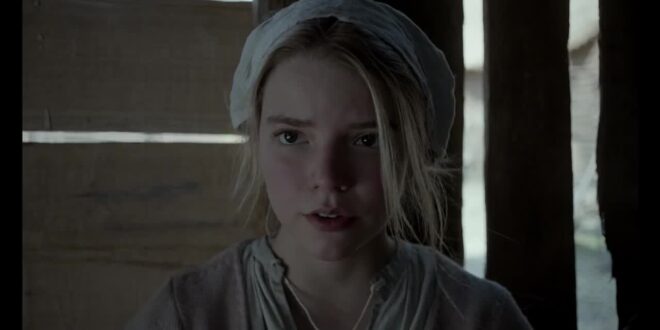“The Witch,” directed by Robert Eggers, is a critically acclaimed horror film that takes viewers on a chilling journey into the 17th-century New England. This atmospheric and unsettling movie delves into themes of religious fanaticism, isolation, and the supernatural. With its meticulous attention to historical accuracy and its slow-burning tension, “The Witch” has become a benchmark for the horror genre. In this article, we will explore the elements that make “The Witch” unique and discuss other movies that share similar themes and atmospheres.
1. The Historical Accuracy and Immersive Setting
One of the standout features of “The Witch” is its commitment to historical accuracy. The film transports viewers to a time when Puritan beliefs and superstitions were deeply ingrained in society. The dialogue is written in Early Modern English, adding an additional layer of authenticity. The meticulously recreated sets, costumes, and props further enhance the immersion, making the audience feel like they are witnessing events unfold in real-time.
Other movies that share this attention to historical detail include “The Crucible” (1996) and “The Village” (2004). Both films explore similar themes of religious paranoia and the consequences of blind faith. While “The Crucible” is set during the Salem witch trials, “The Village” takes place in a secluded 19th-century community. These movies effectively transport viewers to different historical periods, creating an eerie sense of realism.
2. Slow-Burning Tension and Psychological Horror
“The Witch” is not your typical jump-scare horror film. Instead, it relies on slow-burning tension and psychological horror to create an unsettling atmosphere. The film gradually builds up suspense, leaving viewers on edge throughout its runtime. The use of natural lighting, haunting score, and eerie silence all contribute to the palpable sense of dread.
Movies like “The Babadook” (2014) and “Hereditary” (2018) also excel in generating psychological horror. These films focus on the psychological deterioration of their characters, exploring themes of grief, trauma, and familial tensions. Like “The Witch,” they rely on atmospheric storytelling and a slow-burning narrative to keep audiences captivated.
3. Exploration of Religious Fanaticism and Supernatural Elements
Religious fanaticism is a central theme in “The Witch.” The film examines the destructive power of religious zealotry and the consequences it can have on individuals and families. It explores the fear of the unknown and the blurred lines between religious devotion and superstition. The supernatural elements in the movie add an extra layer of mystery and terror.
Movies like “Rosemary’s Baby” (1968) and “The Exorcist” (1973) also delve into the intersection of religion and the supernatural. “Rosemary’s Baby” explores the paranoia and manipulation surrounding a young woman’s pregnancy, while “The Exorcist” delves into the possession of a young girl and the ensuing battle between good and evil. These films effectively blend religious themes with supernatural horror, leaving audiences questioning their own beliefs.
4. Isolation and the Fragility of Family Dynamics
“The Witch” showcases the isolation and vulnerability of a family living in the wilderness. As they face hardships and unexplained phenomena, their unity begins to crumble, leading to suspicion and paranoia. The film highlights the fragility of family dynamics under extreme circumstances, where fear and desperation can tear relationships apart.
Movies like “The Shining” (1980) and “It Comes at Night” (2017) also explore the breakdown of familial bonds due to isolation and external forces. In “The Shining,” the Overlook Hotel becomes a catalyst for Jack Torrance’s descent into madness, ultimately threatening his family. “It Comes at Night” focuses on a family’s struggle to survive in a post-apocalyptic world, where trust and paranoia become paramount.
Conclusion
“The Witch” is a masterful horror film that stands out for its historical accuracy, slow-burning tension, and exploration of religious fanaticism. It immerses viewers in a haunting and atmospheric world, leaving them with a sense of unease long after the credits roll. Movies like “The Crucible,” “The Babadook,” “Rosemary’s Baby,” “The Shining,” and “It Comes at Night” share similar themes and atmospheres, offering audiences a chilling and thought-provoking cinematic experience. Whether you enjoy historical accuracy, psychological horror, or the exploration of religious themes, these movies are sure to captivate and disturb you in equal measure.
 HammBurg Be informed with latest news, reviews, entertainment, lifestyle tips, and much more.
HammBurg Be informed with latest news, reviews, entertainment, lifestyle tips, and much more.




